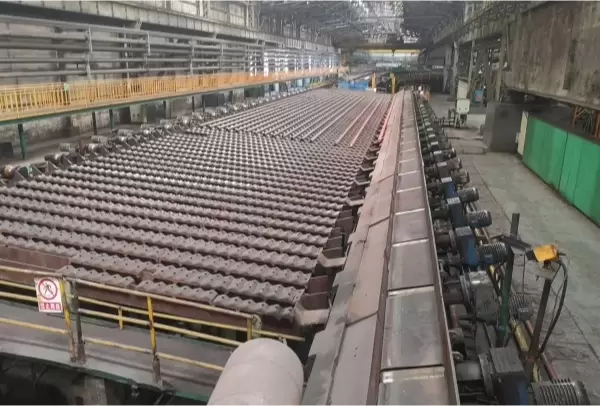In the manufacturing process of steel pipes, various stages are involved to ensure the production of high-quality products. One crucial step is the cooling process, which plays a significant role in determining the final properties of the pipes. Steel pipe cooling beds are essential equipment used in this process. This article explores the importance of steel pipe cooling beds and their role in the manufacturing process.
Understanding Steel Pipe Cooling Beds
1.Definition and Purpose:
Steel pipe cooling beds are specialized equipment designed to cool and solidify steel pipes after they have been heated and shaped. The cooling beds provide controlled cooling conditions to ensure the pipes' proper solidification and prevent any deformation or damage.
2. Components and Design:
Steel pipe cooling beds consist of various components, including cooling fans, water spray systems, conveyor belts, and support structures. The design of the cooling beds is crucial to facilitate efficient cooling and prevent any potential issues during the process.

Importance of Steel Pipe Cooling Beds
1. Ensuring Proper Solidification:
The cooling beds play a vital role in ensuring the proper solidification of steel pipes. After the pipes are heated and shaped, they need to cool down gradually to achieve the desired metallurgical properties. The controlled cooling provided by the cooling beds allows for uniform solidification, reducing the risk of internal stresses and defects.
2. Preventing Deformation and Damage:
Rapid cooling of steel pipes can lead to deformation and damage, compromising their structural integrity. Cooling beds provide a controlled cooling environment, allowing the pipes to cool down gradually and evenly. This prevents the occurrence of thermal stresses, warping, or cracking, ensuring the pipes' dimensional stability and overall quality.
3. Improving Mechanical Properties:
Proper cooling is crucial for achieving the desired mechanical properties in steel pipes. The controlled cooling process provided by cooling beds allows for the formation of a fine-grained microstructure, enhancing the pipes' strength, toughness, and resistance to corrosion. This ensures that the pipes meet the required specifications and standards.
4. Enhancing Production Efficiency:
Steel pipe cooling beds contribute to improving production efficiency. By providing a continuous and automated cooling process, they enable a seamless transition from the shaping stage to the cooling stage. This reduces downtime and increases the overall productivity of the manufacturing process.

Conclusion
Steel pipe cooling beds are indispensable equipment in the manufacturing process of steel pipes. They ensure proper solidification, prevent deformation and damage, improve mechanical properties, and enhance production efficiency. By investing in high-quality cooling beds and optimizing their design, manufacturers can achieve consistent and high-quality steel pipes that meet the industry's stringent requirements.
Streamline Your Manufacturing Process with the Panel Turnover Machine


